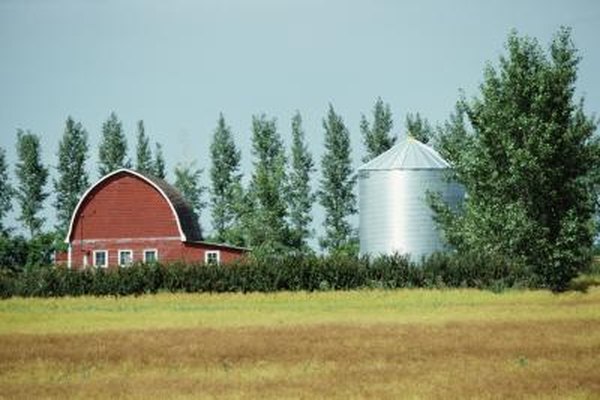The Farm Policy of the New Deal Was Designed to
Farm & Ranch Insurance Vs. Homeowner's Policies

Farm and ranch insurance generally covers more structures than a homeowner's policy.
Photos.com/Photos.com/Getty Images
Both farm and ranch insurance and homeowner's insurance are generally designed to protect property and limit an owner's liability. However, farm and ranch insurance is generally a mixture of homeowner's insurance and business liability insurance, and so will generally cover the buildings and equipment found on a farm as well as a farmer's house.
Homeowner's Insurance
Homeowner's insurance is property insurance for a dwelling and its surrounding property. A homeowner's insurance policy provides protection against loss or damage to the residence and property itself, but also protects from loss of property inside the home, such as furniture or personal possessions. Typical misfortunes covered by a homeowner's policy include fire, burglary and certain natural disasters such as a stroke of lightning. The homeowner's policy also protects the homeowner from liability for accidents that take place on the property. However, a homeowner's insurance policy will have limits on liability, and may not cover items of extraordinary value inside the home, such as fine art or antique furniture. The homeowner may need a separate personal property insurance policy to cover such valuable possessions.
Farm/Ranch Insurance
As the name would suggest, farm and ranch insurance is property insurance for farms and ranches. Like homeowner's insurance, farm and ranch insurance covers damage to a dwelling and personal property inside, as well as mishaps on the property. However, farm and ranch insurance is also designed to offer a combined level of commercial liability insurance. The owner can also insure structures typically associated with business of farming or ranching, structures such as barns, silos and fencing. Increased coverage may also include protection for certain equipment and property necessary to the business, such as tractors, hay or livestock.
Defining Farms/Ranches
To determine whether a piece of property needs farm and ranch insurance, as opposed to homeowner's insurance, an insurance company may look at several factors. These include any buildings on the property that are not typical adjuncts to a dwelling. For instance, a separate garage may be found on any residential property, but a stable or a barn generally won't. The insurance company may also look at the presence of livestock animals on the property, such as cows or sheep. Another indicator may be people working outdoors on the property. Note that some states require separate workers' compensation insurance, a separate policy from farm and ranch insurance, to cover workers on the farm or ranch.
Comparative Coverage
Beyond coverage of a home vs. a farm, the real difference in the two types of policies is the activity they're intended to cover. Farm and ranch insurance is really homeowner's insurance with an additional level of protection for business activities conducted on the property. While a homeowner may run a business out of her home, she may not necessarily need separate business liability coverage. But a farm or ranch, despite containing a dwelling, presents much more extensive potential liability. Farm and ranch insurance is designed to address both the dwelling and business aspects of liability in one policy.
References
Writer Bio
Erika Johansen is a lifelong writer with a Master of Fine Arts from the Iowa Writers' Workshop and editorial experience in scholastic publication. She has written articles for various websites.
The Farm Policy of the New Deal Was Designed to
Source: https://finance.zacks.com/farm-ranch-insurance-vs-homeowners-policies-8599.html
0 Response to "The Farm Policy of the New Deal Was Designed to"
Postar um comentário